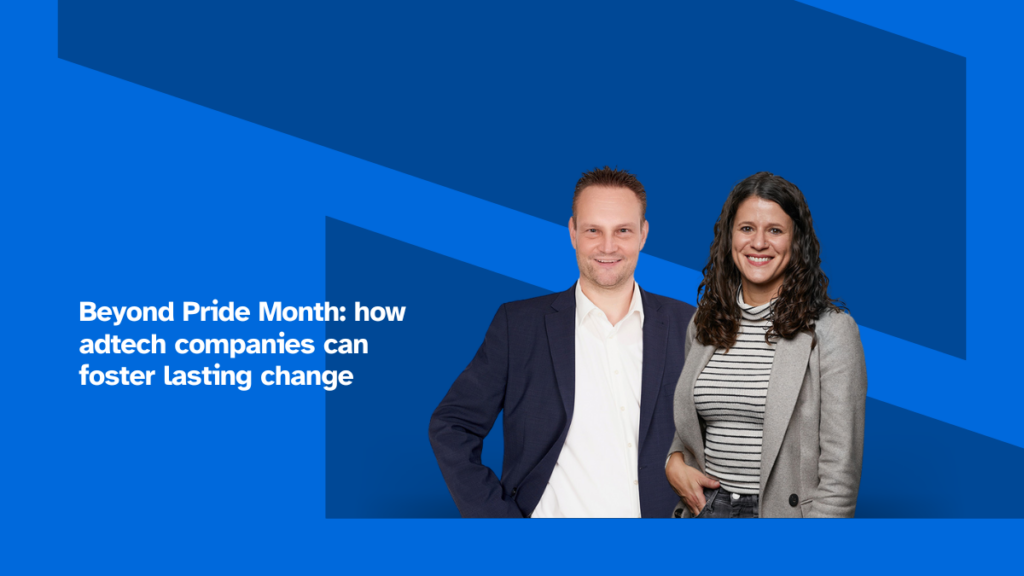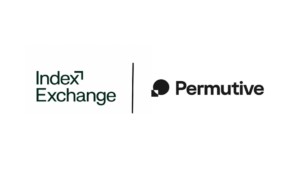By Christian Osterhues, VP People & Culture and Shira Leffel, VP Marketing & Product Education at smartclip
Pride Month is more than parades, rainbows, and glitter. It’s a time to celebrate the LGBTQIA+ community, honour the struggles and achievements that have shaped the current landscape, and advocate for greater equality and acceptance.
Despite significant strides in queer rights, complete acceptance remains elusive — with more than one-third of LGBTQIA+ employees reporting that they have left their job due to mistreatment related to their sexual orientation or gender identity. In honour of Pride Month, we’re examining the current workplace climate for LGBTQIA+ individuals and exploring what companies can do today to foster greater equity.
The current state of LGBTQIA+ inclusion and equity in the (ad)tech industry
While many of the world’s largest tech companies rank among the most LGBTQIA+ friendly workplaces, we still have a long way to go towards true inclusivity. Despite advancements in our industry, discrimination and bias remain prevalent. In 2019, 21% of European LGBTQIA+ workers reported workplace discrimination, with transgender individuals facing the highest rate at 36%. These inequalities extend beyond interpersonal interactions to systematic issues. We’ve all heard of the gender pay gap, but what’s talked about even less is the LGBTQIA+ pay gap.
On average, LGBTQIA+ workers earn approximately 89 cents for every dollar earned by their non-LGBTQIA+ counterparts. This discrepancy becomes even more apparent when you add ethnicity and gender to the mix, with LGBTQIA+ women making 87 cents, African American LGBTQIA+ members making 80 cents, and LGBTQIA+ Latino women making 72 cents for every dollar earned by their counterparts.
Strategies any company can take to influence workplace inclusivity and equity
Awareness of the issue is a great first step; action is essential for true progress. Here are some effective strategies companies can use to boost workplace inclusivity for LGBTQIA+ individuals.
1. Make Your Technology Platforms More Inclusive
- Design products with diverse user experiences in mind.
- Incorporate a range of gender options beyond binary choices (e.g., male/female) in user profiles. This fosters accurate representation and respects users’ identities.
2. Address the Lack of Diversity in the Adtech Workforce
- Actively recruit from diverse talent pools.
- Create inclusive environments through mentorship programmes and partnerships with diversity-focused organisations.
3. Constantly review and update recruitment practises:
- Ensure your recruitment process is inclusive by using gender-neutral language in job descriptions and being explicit about your commitment to diversity (for example, you can explicitly include a diversity text at the bottom of your job advertisements).
- Train hiring managers on unconscious bias and inclusive interviewing techniques.
4. Establish inclusive policies and practices:
- Implement zero-tolerance policies that explicitly protect against discrimination based on sexual orientation, gender identity, and gender expression.
- Use gender-neutral language in company documents, communications, and job descriptions, and provide options for employees to choose and display their pronouns.
5. Diversify voices:
- Start a DEI (Diversity, Equity, and Inclusion) committee within your organisation to enrich its cultural background and demonstrate a commitment to change.
- Invite guest speakers to educate your team on best practices and the realities of being part of the queer community, normalising LGBTQIA+ identities in the workplace.
6. Support existing LGBTQIA+ employees:
- Create safe spaces for open communication and support. Implement a confidential and anonymous channel for reporting issues, such as an anonymous mailbox.
- Acknowledge and address personal biases to foster a more inclusive environment, promoting open discussions about biases to reduce toxicity and enhance understanding.
- Encourage and support LGBTQIA+ individuals in leadership positions. Representation at all levels of the organisation can inspire and create a more inclusive culture.
7. Publicly support LGBTQIA+ rights and raise allyship:
- Demonstrate your company’s commitment by supporting LGBTQIA+ rights publicly, participating in Pride events, making public statements, and backing relevant legislation. This not only boosts morale internally but also strengthens your brand’s reputation.
- Build a community of informed allies through training sessions and conferences that educate employees on LGBTQIA+ issues and increase tolerance.
- Offer resources for self-education and consider becoming certified by programmes like “Prout at Work” and “Charta der Vielfalt”. Genuine commitment is crucial; performative allyship without action is ineffective.
8. Regularly assess and improve:
- Conduct regular surveys and assessments to gauge not only inclusivity but also pay equity and identify areas for improvement.
- Use this data to inform policies and initiatives, ensuring they are effective and aligned with employee needs.
Transformative change is a marathon, not a sprint
It’s easy to be motivated during Pride Month, but real change requires more than a single month of advocacy. It demands a long-term investment of time, resources, and patience to see initiatives through. Diversity of all kinds has been proven to benefit companies, industries, and interpersonal relationships. These strategies are just a starting point — there are countless ways to foster an inclusive environment. For us, Pride Month is every month, and we’ll continue to approach it that way forever.












